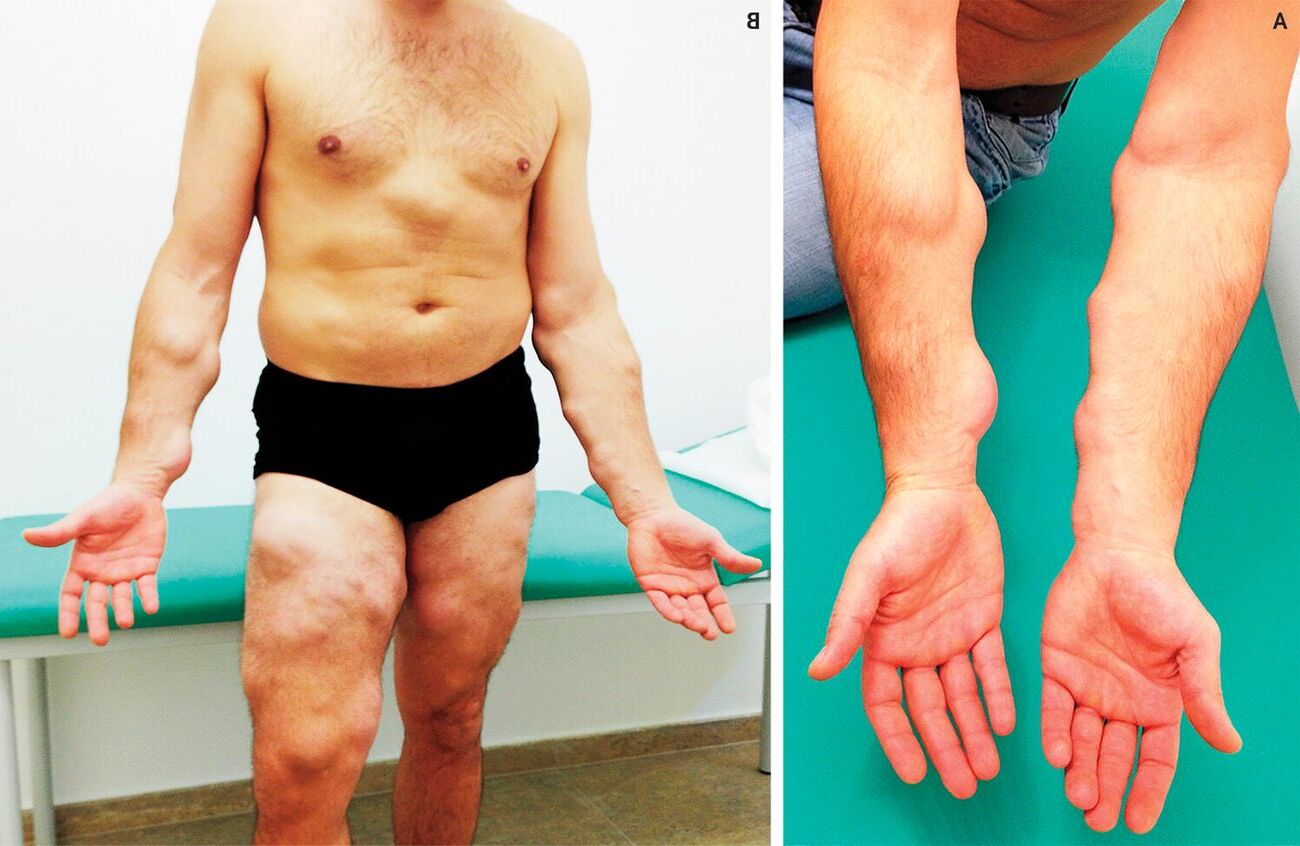
Familial Multiple Lipomatosis is a rare genetic disorder characterized by the development of multiple benign fatty tumors, known as lipomas, under the skin. These lipomas can appear anywhere on the body, often causing discomfort or cosmetic concerns. What causes Familial Multiple Lipomatosis? The condition is inherited in an autosomal dominant pattern, meaning a single copy of the altered gene in each cell is sufficient to cause the disorder. This means if one parent has the condition, there's a 50% chance of passing it on to their children. How is it diagnosed? Diagnosis typically involves a physical examination, family history, and sometimes imaging tests or a biopsy. Understanding this condition can help manage symptoms and improve quality of life.
Key Takeaways:
- Familial Multiple Endocrine Neoplasia (FMEN) is a rare genetic disorder causing tumors in multiple glands. It has two main types, MEN1 and MEN2, each with unique symptoms and genetic mutations.
- Managing FMEN involves surgery, medications, and regular monitoring. Support groups, genetic counseling, and ongoing research offer hope and support for patients and families.
What is Familial Multiple Endocrine Neoplasia?
Familial Multiple Endocrine Neoplasia (FMEN) is a group of rare genetic disorders. These conditions cause tumors in multiple endocrine glands. Understanding FMEN can help manage and treat the condition better.
-
FMEN is inherited in an autosomal dominant manner. This means only one copy of the altered gene is needed to cause the disorder.
-
There are two main types of FMEN: MEN1 and MEN2. Each type affects different glands and has unique symptoms.
-
MEN1 is also known as Wermer's syndrome. It primarily affects the parathyroid glands, pancreas, and pituitary gland.
-
MEN2 is divided into MEN2A and MEN2B. Both types involve medullary thyroid cancer but differ in other symptoms.
-
MEN2A includes medullary thyroid cancer, pheochromocytoma, and parathyroid hyperplasia.
-
MEN2B involves medullary thyroid cancer, pheochromocytoma, and mucosal neuromas. Patients often have a Marfanoid habitus.
Genetic Mutations and FMEN
Genetic mutations play a crucial role in FMEN. These mutations can be identified through genetic testing.
-
MEN1 is caused by mutations in the MEN1 gene. This gene provides instructions for making a protein called menin.
-
MEN2 is caused by mutations in the RET proto-oncogene. This gene is crucial for cell growth and development.
-
Genetic testing can identify mutations in the MEN1 or RET genes. Early detection can help manage the condition better.
-
Family members of FMEN patients are often advised to undergo genetic testing. This helps identify those at risk.
Symptoms and Diagnosis of FMEN
Recognizing the symptoms of FMEN is essential for early diagnosis and treatment.
-
Common symptoms of MEN1 include hypercalcemia, kidney stones, and stomach ulcers.
-
MEN2A symptoms often start with a lump in the neck due to medullary thyroid cancer.
-
MEN2B patients may have distinctive facial features, such as swollen lips and thick eyelids.
-
Pheochromocytomas in MEN2 can cause high blood pressure, headaches, and sweating.
-
Parathyroid hyperplasia in MEN1 and MEN2A leads to high calcium levels in the blood.
-
Pituitary tumors in MEN1 can cause vision problems, headaches, and hormonal imbalances.
Treatment and Management of FMEN
Managing FMEN involves regular monitoring and various treatments to control symptoms and prevent complications.
-
Surgery is often required to remove tumors in affected glands.
-
Medications can help control hormone levels and manage symptoms.
-
Radiation therapy may be used for certain types of tumors.
-
Regular blood tests are essential to monitor hormone levels and detect any changes early.
-
Imaging tests like MRI and CT scans help identify tumors and assess their growth.
-
Lifestyle changes such as a balanced diet and regular exercise can improve overall health.
Living with FMEN
Living with FMEN requires ongoing medical care and support from healthcare professionals and loved ones.
-
Support groups can provide emotional support and practical advice for patients and families.
-
Genetic counseling is recommended for families affected by FMEN. It helps understand the risks and implications of the disorder.
-
Regular check-ups with endocrinologists and other specialists are crucial for managing the condition.
-
Education about FMEN helps patients and families make informed decisions about their health.
-
Mental health support is important, as living with a chronic condition can be challenging.
-
Patient advocacy organizations offer resources and support for those affected by FMEN.
-
Research is ongoing to find better treatments and possibly a cure for FMEN.
-
Awareness campaigns help educate the public and healthcare professionals about FMEN, leading to earlier diagnosis and better outcomes.
Final Thoughts on Familial Multiple Lipomatosis
Familial Multiple Lipomatosis (FML) is a rare genetic condition characterized by the development of multiple benign fatty tumors called lipomas. These lipomas can appear anywhere on the body but are most commonly found on the trunk, arms, and thighs. While they are generally harmless, they can cause discomfort and cosmetic concerns for those affected.
Understanding FML is crucial for early diagnosis and management. Genetic counseling can provide valuable insights for families with a history of the condition. Treatment options, though limited, include surgical removal of lipomas, which can offer relief from symptoms.
Raising awareness about FML can lead to better support and resources for those living with this condition. If you or a loved one suspect you might have FML, consult a healthcare professional for proper evaluation and guidance.
Frequently Asked Questions
Was this page helpful?
Our commitment to delivering trustworthy and engaging content is at the heart of what we do. Each fact on our site is contributed by real users like you, bringing a wealth of diverse insights and information. To ensure the highest standards of accuracy and reliability, our dedicated editors meticulously review each submission. This process guarantees that the facts we share are not only fascinating but also credible. Trust in our commitment to quality and authenticity as you explore and learn with us.
